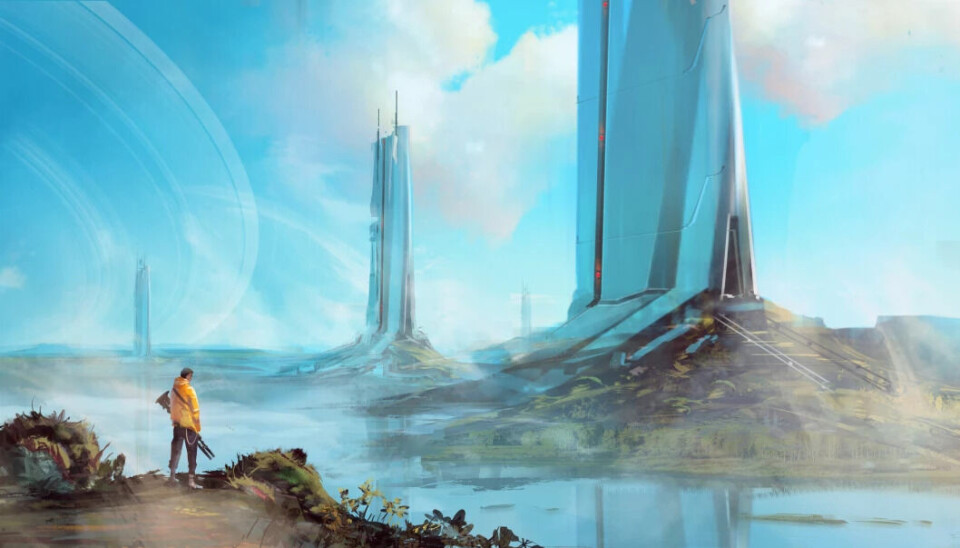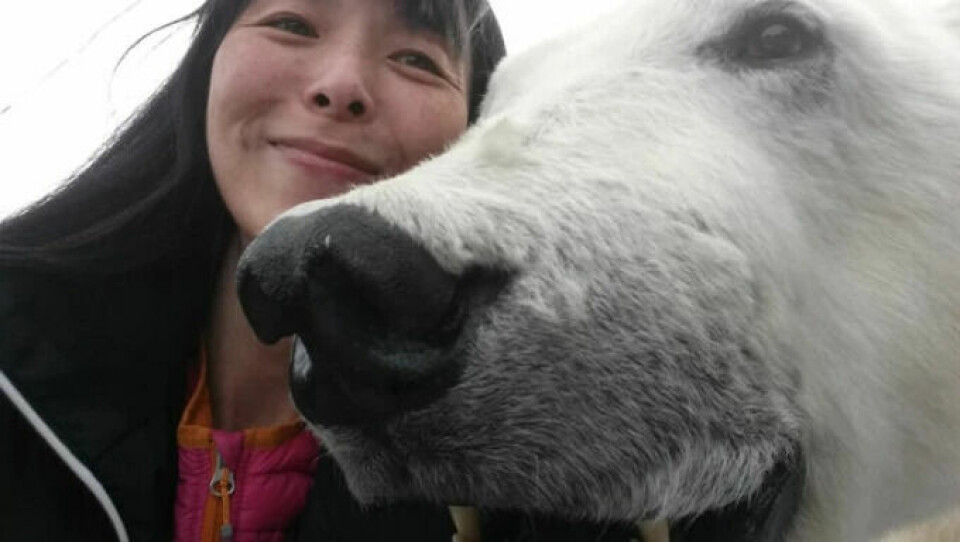
Science fiction tells us we are destroying the world we live in. Can it also help us save it?
Films and books of this genre contemplate the future but are also useful for understanding our present, according to researcher.
Researchers who are particularly concerned about the future gathered at the University of Oslo recently, at a conference on science fiction.
Bodhisattva Chattopadhyay prefers to call it future fiction.
“Science fiction describes societies that are foreign to us. Future fiction is about societies we can recognise,” he explains.
The books, series, movies and games in this genre have a clear message.
Learning from the future?
“They are about the future, but the message is that we have destroyed the world we now live in,” Chattopadhyay, an associate professor at the Department of Cultural Studies and Oriental Languages at the University of Oslo, says.
He refers to the book The Waste Tide by Chen Quifan, which is a story about a fictional Chinese city that receives electronic garbage. The city is based on the real city of Guiyu in China, which handles our e-garbage today.
“Quifan criticises today's consumer society. We use our mobile phones without thinking about where they will end up afterward,” Chattopadhyay says.
He believes we can use future fiction to learn about our present and about the challenges we may face in the future.

200 years ahead
The books, films and games Chattopadhyay and his colleagues are researching do not go very far into the future. Instead, they examine the near future. They have set the limit of 200 years ahead of the present day.
Author Berit Ellingsen writes science fiction novels within this time period.
“The action takes place only a few years ahead, at most 15 years,” she tells sciencenorway.no.
Her three novels also fit in other ways:
“Actually, they are probably as much about our own time as the future,” Ellingsen says.
From idea to practice
Chattopadhyay believes that future fiction can help us navigate into the future.
But are they not simply the fantasies of their authors? What can they really teach us?
“All ideas are fantasies,” says the researcher.
He points out that writers, filmmakers and game creators must be practical when portraying the technology of the future.
They have to invent technology that does not exist, but that we can imagine. This starts the ball rolling, according to Chattopadhyay.
Authors of science fiction, for example, have written about portable music machines and meat grown in the laboratory long before this became a reality.
Author Ellingsen does not find it very difficult to imagine the technology of the future.
Biotechnology and ethics
“If you have a good knowledge of technology and follow the news, you will see the trends. And there are a lot of people who make a living by predicting where the technology will develop. It's not witchcraft,” says Ellingsen.
She finds it more exciting to write about how the technology is used. Especially biotechnology.
“I have a degree in biology and am interested in genetic engineering. There is a lot of talk about what we can achieve, but less talk about whether we should actually do it. Ethics and morality are to a large extent set aside in today's international discussion about biotechnology, which is important for authors to keep up with,” she says.

Social criticism
Many authors and artists in the science fiction genre criticise the society they live in. They want to change the way we think about the present.
Chattopadhyay points to George Orwell, who in 1948 wrote about a totalitarian society in the book 1984.
“People have perceived the book as prophetic, that Orwell predicted how society can develop in the future. But really it was meant as a social critique of the time and the society he lived in,” says Chattopadhyay.
Author Ellingsen refers to the author William Ford Gibson, who wrote in the genre of cyberpunk in the 1980s.
“The books were about the fusion of man and machine. They reflected the changes of the time, such as globalisation, the advent of computers, and the Internet,” she says.
The world has to some extent followed the dystopian development depicted in cyberpunk literature, according to Ellingen.
“Now we see that multinational companies such as Google, Facebook and financial companies dominate over states and nations,” she says.
Global themes
Bodhisattva Chattopadhyay leads the research group CoFUTURES at the University of Oslo. There they look at future stories from different regions and cultures, from the Middle East, Africa, India, China, Latin America and Norway.
Future fiction has a lot in common across national borders and continents.
Climate change is probably the most important topic today, Chattopadhyay believes. Meanwhile, science fiction writers have always been concerned with nature, and the human impact and destruction of the Earth.
Other common themes are political and economic deterioration and demographic changes. The use of technology is also always involved.
There are still regional differences.
More optimistic in the south
References, themes, religious and cultural conditions are different across regions, according to Chattopadhyay.
Water shortages, for example, are a major problem in India, South Africa and South America. The million-strong city of São Paulo in Brazil may run out of water. The same can also happen in several Indian cities. It is reflected in the fiction.
“In Norway, we are not prepared for heavy rainfall. It's getting wetter. In ten years we may not have snow. Maybe we can find solutions in future fiction,” says Chattopadhyay.
“The future fiction from the global north is more pessimistic, while in the global south it has a brighter view of the future,” he says.
Berit Ellingsen recognises herself.
“I fit in well with that pattern. My three novels are quite pessimistic. I call them feel-bad novels,” she says.
Possible futures
Chattopadhyay and his colleagues are less concerned with the differences and more concerned with what the genre can teach us.
“We look at topics that are important today and examine how future fiction handles the same problems,” he says. “We want to give people possible futures, not just past ones.”
The research group works broadly. They interview authors, artists and filmmakers, and they read texts. They also communicate in many channels.
“We have made documentaries, video games and exhibitions. And we collaborate with researchers from completely different disciplines, such as architects and urban planners,” says Chattopadhyay.
Can be used to plan crises
“We have also participated in seminars in the UN on how to plan for the future. There we work with different future images,” Chattopadhyay says. “We challenge traditional methods of planning and preparedness for crises.”
Berit Ellingsen is not sure if her books can be used for crisis planning.
“They are probably too pessimistic and are more about the characters than society at large,” she says.
Life with science fiction
Both the author and researcher have been interested in science fiction all their lives.
“I have read science fiction ever since I learned to read,” says Berit Ellingsen.
Chattopadhyay's childhood home in New Delhi, India was full of books. His parents did not dictate what young Bodhisattva had to read.
“My parents were not sceptical of the science fiction books or that I played so many computer games, but they probably thought it was a lot. My grandfather was one of India's most famous philosophers. They probably hoped I would follow in his footsteps,” Chattopadhyay, who also runs the University of Oslo’s video game laboratory, says. “But now I have made a career of what I did as a child: science fiction.”
———
Translated by Alette Bjordal Gjellesvik.
Read the Norwegian version of this article on forskning.no
































